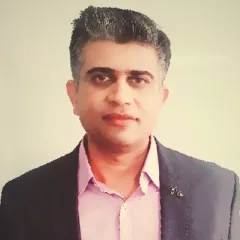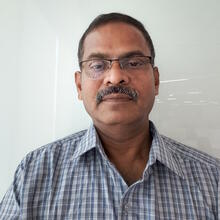

Role of Simulation Tools in New Vehicle Development
Dr. Raja has a Postgraduate and Doctorate from IIT Madras. He has about 20 years of experience in the automotive sector. He has made significant contributions in the areas of Li ion batteries and fuel cell Electric vehicle development. He is well-versed in System Engineering, System integration, control architecture, Functional safety and Hardware-in-loop simulation. He has been involved in the planning and creation of infrastructure for Battery and fuel cell power train development.
Prior to joining Reliance, he led the Advanced Engineering and system engineering teams at Tata Motors & Mahindra Electric. He currently works at Reliance New Energy as a Senior Vice President, where his focus is on the design and development of electric traction systems for fuel cell vehicles.
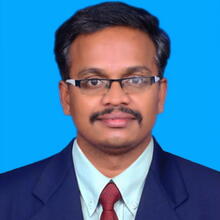
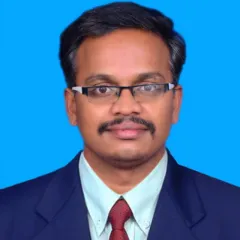
Harikrishnan JALAPATHY started his career with Tata Consultancy Services in 2009. Currently, he is Technical Lead working for automotive industry. In his current role, he interacts with globally acclaimed automotive OEM and works with them for various technical requirements which can be addressed using SIMULIA products. He has Masters Degree in Engineering Design from CEG, Anna University, Chennai. His focus areas are Durability, Sealing, and Optimization on Battery, Powertrain, Drive Unit components.
Edge Bonded Carrier Gasket DOE & Parametric Design Optimization using I-Sight
An edge-bonded carrier gasket (Bonded Seal or Dowty washer) is a type of gasket used to seal two surfaces together to prevent leakage in various industrial applications, such as in pipelines, pumps, and engines.
This gasket is composed of a flexible material, such as rubber or silicone, which is bonded to a metal carrier or core along its edges. The metal carrier provides structural support and stability to the gasket, while the flexible material provides a seal between the two surfaces it is placed between. Overstrain will be a problem when designing the gasket at MMC (Max. Material Condition), and Contact Pressure and Contact Width may also be problems at LMC (Least Material Condition). Finding a balanced design that satisfies the requirements under both scenarios is a difficult undertaking.
The effect of geometric parameters on the sealing behaviour of a carrier gasket is examined in this study. FEA model generated from ABAQUS/CAE was used in conjunction with a powerful tool I-sight to perform a parametric study, where the impact of each design parameter on the gasket's performance was evaluated. Once the key design parameters have been identified, optimization techniques are used to determine the optimal values for each parameter. The goal of the optimization process is to find the set of design parameters that results in a gasket with the best possible performance for the given application.
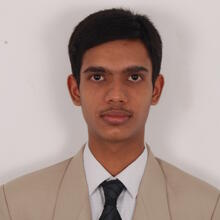
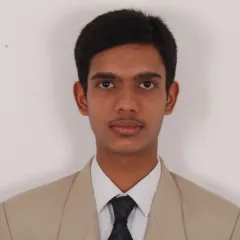
Masters in Mechanical Engineering, 10+ years of Experience in Automotive Structural components Simulations, Expertise in Various Joint Sealing Evaluations, Optimization and Root Cause analysis.
Fastening and Structure Design of Sheet Metal Components in Electric Vehicle Battery Packs
As the demand for Electric vehicles is more in the automotive market, it becomes important to design the Battery Packs with robust fastening and structure with respect to warranty and safety of the vehicle. Since the evolution of various electric vehicles, sheet metals are of predominant use as structural frames of the battery pack as they provide an opportunity to produce light weight and quality stamped components. It is well known that most of the structure in IC Engines and Drive Units are made of cast metals. It is very much required to design with rigid cast metal structures in IC Engines as it must handle and transfer high amount of engine firing load loads and significant amount of mechanical thermal and pressure loading. But coming to Electric vehicles, most of the energy of the Battery pack comes from the hot gases and pressure from cells which is mostly of a small value compared to the engine loads. This is the reason the sheet metals become a sufficient solution as structural frames in EV Battery Packs.
All the Electric Vehicle structures require the good balance of cost to Mileage ratio to keep up the sales in the market. As the mass of the Battery Pack is as important as its energy density, the pack should be well designed for a robust structure with a minimum mass. It is generally observed in the available EV Vehicles that huge number of bolts are used on the top cover which might be an overdesign with respect to the structural requirement and an unnecessary excess ribbing mass on cover adding more amount of cost over millions of vehicles. Hence it is important for any EV OEM company to have enough research data on maintaining minimum mass for Electric vehicles which will be an added value to the mileage and helps to keep up the higher market value.
Any Battery Pack is generally designed with a cover on the top which closes the whole set of internal modules, acting as an enclosure to the whole pack. The fasteners and the sealing strategy around this cover need to be designed appropriately against the escape of fluid and gases from inside the pack. For any given structure, the robustness can be well defined by the structural motion caused by the mechanical and thermal loading onto the pack, which comes from the road loads, the temperature loads from the cells and the pressure loading from the hot gases developed when some of the cells go off.
As the sheet metal structural stiffness is very different causing high deformation unlike the cast metal structures, a detailed study is performed on a specific concept design to understand the impact of various packaging parameters of the Battery pack on to the structural motion. The parameters which are studied are the Bolt spacing, the cover wall position, cover wall height, cover thickness and the underlying side panel stiffness.
The Abaqus Shell modeling technique is used for defining the sheet metal properties of cover. The study models capturing the above-mentioned structural parameters are developed using Abaqus CAE parametrization technique. Finally, the 3D FEA models are generated by applying thermal and internal pressure loading and are solved in Abaqus Implicit solver. The structural motion results are analyzed using a specific Abaqus python code developed under the EV Battery simulation Capability. The results from this study will give a good guideline to maintain enough bolts, with a minimum cover structure required to meet the durability and safety requirements.
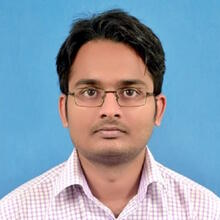

Vikram Kumar REDDY pursued B.E Hons. Mechanical Engineering from BITS, Pilani, graduated in 2009. He has 12 years of experience in FEA Structural Analyses. He worked in rotating machinery, pressure vessels and automobile industries and gained exposure in diverse product designs as well as FEA analysis types such as modal, simple harmonic, non-linear static, dynamic, thermal, fatigue, optimization tools. He is passionate about providing quick and correct simulation results which will drive key business decisions during early design stages.
Parametric Shape Optimization of Belleville Spring Using Isight
In hydraulic actuated automatic transmissions, clutch systems play a vital role in the smooth operation of gear shifting. A piston return spring of some kind is essential to prevent clutch piston’s return when clutch is not applied i.e., OFF condition and to apply the engagement force smoothly in the initial stages of clutch apply i.e., ON condition. Belleville type springs are often used for this purpose. Generally, Belleville springs refer to the kind made from tapered washers stacked in series, parallel or mixed configurations. But in clutch systems of automatic transmissions, a single tapered disc with hoop discontinuity at the inner diameter called slotted region is used. The load stiffness curve is non-linear like any typical Belleville spring, but the inclusion of hoop discontinuity and other design considerations can make it complex enough to justify the use of advanced numerical simulations while choosing the best fit design.
In this work, a specific Belleville spring design was studied. The baseline analysis using goodman plots {for mean stress correction} and S-N curves showed scope to improve the fatigue performance. Then the task of optimizing this design to improve fatigue, without affecting the load-displacement curve {stiffness}, is taken up. If the part is too compliant to improve stress distribution, stiffness requirements are affected. If part is too stiff, stress increases at fillets and other stress concentration regions. Since there is a trade-off between stiffness and stress requirements, this problem is ideal for optimization. To speed up the simulation time during optimization, a low-fidelity model is created with parametrized features in Abaqus/CAE. It is a displacement-controlled model with force and stresses as outputs. This model is validated such that the prediction is accurate enough compared to original high-fidelity model at all points of the stiffness curve. An Isight workflow is created with design variables of interest. Range of the variables, stress and force constraints are suitably selected based on the manufacturability, material, and sizing constraints. Minimize mass is chosen as the objective. Various algorithms available in Isight are studied. Due to reduced simulation run time with low-fidelity model, several thousand runs were simulated, and best fit design has been selected. It is validated with high-fidelity model and compared with original design. For the given stiffness curve, fatigue behavior at extreme conditions also has significantly improved making it a robust design. Currently, the optimized design is being considered for production.


CAE professional with 13+years’ experience in structural performance evaluation of automotive, Tyre Simulation, Aerospace and Energy products.
Application of Numerical Prediction Automation in Subsea Pipeline for Stability Analysis
The dynamic on-bottom stability analysis represents a fundamental task in the design process of the subsea pipelines. Offshore pipelines in deep water are generally laid directly on the seabed, without any additional stabilization measures. Design parameters that determine the soil resistance to lateral and axial motion of the pipeline are a function of the amount of vertical embedment. However, this latter quantity is difficult to estimate, partly because of the effects of soil heave around the pipeline as it penetrates.
In this paper, the dynamic on-bottom stability analysis is performed using a finite element based advanced offshore engineering simulation software called “FEA Tool” to predict the response of a subsea pipeline in a time-domain simulation, based on a given environmental condition. Based on the simulation, the dynamic response of the pipeline is investigated and the reasons behind such response are clarified. Comparison with other conventional stability methods is conducted to study the effect of ignoring passive soil resistance and the importance of dynamic stability analysis in optimizing the on-bottom stability design of subsea pipelines.
Scripting is one such tool which enables rapid development of utilities, customizations, and automation of tasks. This in turn reduces modeling errors and enables great saving of time compared to traditional approach. In routine simulation work, most of the tasks are repetitive. These scripts are fully parameterized and support control over a Pipe OD, Thickness, Coating, and its discretization, Furthermore, these scripts support post-processing of Graphs and Stress envelop plot along the Pipeline and other quantities of interest. These scripts increase the efficiency of an analyst to develop a large series of analyses without sacrificing solution quality. For example, high quality analyses may be generated in short periods. The efficiency gains from this approach are especially noticeable when using the scripting process for large batches of jobs
Keywords: Dynamic on-bottom stability; Finite element analysis (FEA); Hydrodynamic loads; Subsea pipelines; Post-processing Automation, Python, Scripting interface-GUI
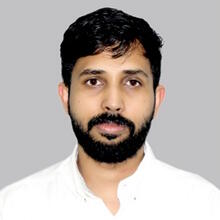

Deepak SREEDHAR KANAKANDATH, Senior Engineer CAE for RESS durability and fatigue at Tata Consultancy Services, holds a bachelor’s degree in Mechanical-Automobile Engineering from Sree Chitra Thirunal College of Engineering, University of Kerala. With more than 8 years of experience in the field of CAE, Deepak has been involved in various roles in Vehicle subsystem integration, CAE Process Automation, EV battery pack safety and crashworthiness simulation and battery pack structure, vibration, and fatigue performance improvement for a major US OEM. He has a proven track record of script development, deployment, and maintenance across simulation teams, along with methodical design improvement and multi-disciplinary optimization workflows for automotive battery structures.
Support Bracket Integrity Study Using Random Vibration Road Loads on Battery Module of a Performance Automotive Battery Pack
Automotive pack designs are turning increasingly complex based on evolving vehicle applications and performance requirements. To extract maximum range and enable rapid power delivery from the pack, the packaging space available for the pack enclosure needs to be completely utilized, often resulting in unique module arrangements to achieve the best architecture for maximum energy density. As the battery module supports are displaced from the enclosure to vehicle mounts, there is a higher probability for road load vibrations to be transmitted and amplified through the support structures. These vibrations can cause durability concerns for the battery module attachments, electronics, and plumbing which can adversely affect power delivery and cooling. Since vibration testing for fully assembled packs are very difficult at this scale, often these separate structures and tested on electromagnetic shaker tables as subsystems on custom made fixtures to make sure the components stay functional under expected road loads. This paper describes an attempt to understand and correlate the behavior of support brackets and welds of such a battery pack module substructure. The subsystem is mounted on a fixture for a shaker table test setup and the strength of seam welds that attach support brackets to the module are investigated. These brackets are directly responsible for the vibration response exhibited by various components attached to the battery modules on the support structure like the PCBs, cells, high voltage cables and coolant plumbing lines. Vibration response values RMS beyond a target specified by internal standards of the organization can be harmful to electronics commanding the cell charge discharge circuits. To initiate the study, accelerometer data from the actual test is used to create an input load dataset for a finite element model setup in Abaqus. The shaker table test uses road load data inputs from RLDA converted into power spectral density form in frequency domain. Actual vibration loads transmitted to the subsystem from the fixture are investigated initially to understand effects of the fixture setup. Responses to the actual frequency domain input PSD are then recorded using a PSD response analysis using base excitation in Abaqus to determine the critical modes where the support brackets are excited. The nature of oscillations during mode visualizations will shed light on the load path affecting the structure support bracket. Afterwards, fatigue lives for the bracket and weld are also evaluated using FEsafe to validate designs of the existing bracket and seam weld. Test accelerometer readings are compared to the Abaqus history acceleration response plots and necessary adjustments are made to the weld interface stiffness and damping to replicate the test response. Upon understanding the problem, multiple design iterations are performed to arrive at a conclusion. Finally, an alternate attachment approach is suggested to mitigate risk and make the interface robust for expected road loads for the vehicle. Abaqus and Fesafe helped us rapidly iterate through design concepts to arrive at a viable solution for the support structure. The solver is always reliable and robust enough to tackle frequency domain response and fatigue problems which are crucial in battery pack design for durability.
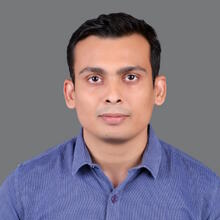

Akshat Sankhere started his career with Continental Autonomous Mobility India, Pvt. Ltd. in 2018. Currently working for Autonomous driving sensor applications supporting structural simulation activities. He completed BE in Mechanical Engineering in 2009.
Self-Tapping Screw Simulation Using Abaqus Cel Technique Introducing Adiabatic Heating Effect on Installation Torque
Screws are the most common and primarily used assembly features in modern day mechanical systems and machinery to provide connections or to assemble two parts with the requisite tightening torque. Screws are classified into different types based on their application; self-tapping is one of the kinds.
Self-tapping screw simulation is not commonly used and due to the complexity involved with high material deformation and material removal it becomes challenging to work with and does require more time in debugging and resolving. With the availability of the testing results it paved a stepping-stone towards identifying and to start work towards this problem statement. Eventually helping to understand more and deep dive closely with the physics involved and better co-relation. Not much work has been carried out on this topic and to the existing work if additional parameters are included, then the results could be improved.
Self-tapping screws are primarily used when two dissimilar metallic or non-metallic parts are to be held together. In the present study a self-tapping screw simulation was performed, and the torque required for installation was compared with the experimental test results or data. During self-tapping process heat gets generated, which plays a significant role on torque values. To predict the accurate installation torque, it is important to consider the heat generated during screw self-tapping process. The effect of heat generation on screw installation torque during self-tapping process is examined in this paper. As the process is highly non-linear in nature, to carry out the simulation Combined-Eulerian Lagrangian technique of Abaqus is used which gives the required flexibility to perform the simulation and involves high degree of non-linearity. Plastic material used for screw post is PC-ASA, which is very sensitive to stress, while the screw is modelled using rigid body type. Non-linear material properties are considered for analysis which includes stress-strain data to capture the mechanical deformations and stress gradients on screw post along with the specific heat values to capture the heat generated during analysis. Material stress-strain data captures the temperature profile from 25degree Celsius to 80degree Celsius while the specific heat values defined up-to 285degree Celsius. FEA simulation performed using Abaqus helps in obtaining the installation torque and provides a very good correlation with the experimented torque analysis graphical data. To reduce the cost of product and testing time, simulation provides fast and accurate results, one of these criteria includes the material selection. For screw self-tapping simulation, it is also important that the material should hold the applied torque and give the insight of the material behavior at high temperatures generated during the process. Numerical simulation using Abaqus, helps to predict the installation torque and safe torque values and to eliminate any failure risks which arises due to inadequate torque or boss design. Real time testing has some challenges in obtaining heat generated outputs which could be overcome with this simulation technique and provide a valuable guide for designers.
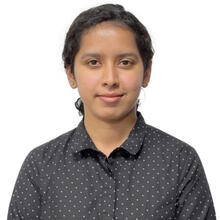
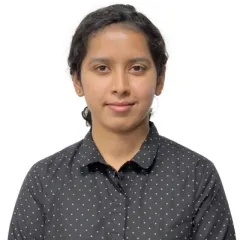
Achala KAUSHIK has about 3 years of experience in Inteva Products. She has a master’s degree in Product Design and Manufacturing from RV College of Engineering, Bangalore. In her current role as a Senior Analysis Engineer, she mainly works on Structural and Kinematic simulations for Closures and Motors Product lines.
Water Intrusion in Automotive Door Latches Using SPH Method
An automotive door latch that functions manually or electronically is a vital component of a door closure system. It primarily aims to provide safety of the occupants by securing the door system by ensuring timely locking and unlocking of the doors. A wide range of factors like safety, ergonomics, and security influence the development of these latches. With the growing trend and advancements, automotive electronics is becoming more complex and prevalent. Hence, any exposure of electrical/electronic components to water make them susceptible to short circuits, corrosion etc., thereby hindering the functionality of systems and increasing the chances of failure in these devices. Intrusion of water into the latch system can be disastrous depending on the climatic conditions. Stringent safety criteria have given rise to unconventional test methods that are time-consuming and hence necessitate virtual validation techniques. Virtual validation becomes a viable option and with proper correlation work it helps to address these types of problems at low cost and in early stages of product development The latch is subjected to an impact by a jet of water, modelled using Smoothened Particle Hydrodynamics (SPH) technique. SPH is a mesh-free method used to simulate fluid flow and has found its application in many engineering problems & fluid structure interaction (FSI) models. Since it can handle problems involving free surfaces, deformable boundaries, moving interfaces, extremely large deformation, and crack propagation, this was found to be an ideal technique for simulation. Water is made to impinge on the latch assembly and the/those water accumulated regions observed in the simulation were compared with the test results which are found to have good correlation. A design modification was suggested to prevent/minimize water ingression into the system which was further analyzed and proved to be efficient based on the FSI methodology.
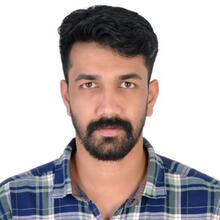
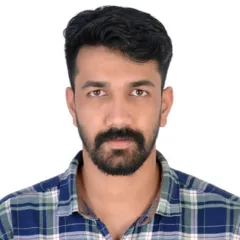
Saran CHANDRAN KT has close to 5 years of experience in CAE domain with expertise in Structural Analysis. He has bachelor’s degree from GCT Salem on Mechanical Engineering. He started his career with Xitadel CAE Technologies as Abaqus Support and later worked as CAE engineer for 4 years working for FMCG projects. Currently working as a Senior CAE Engineer at Inteva Products India Pvt Ltd, supporting for Closures and Motors Product line.
Methodologies for Rivet Forming in ABAQUS
In automotive door latches, rivets may be used to secure the latch mechanism to the door panel or frame, or to join other components of the latch assembly together. Rivets provide a strong, reliable connection that is resistant to vibration and other mechanical stresses, making them well-suitable for the extreme environmental conditions of a vehicle.
In the assembly line, the riveting operation will be done at two different stations i.e., during the frame and the back plate assembly process respectively and during the process there will be certain amount of deformation of the material and the residual stress field induced around a rivet area. The change in dimensions during riveting and the installation force or squeeze force must determine upfront in order to achieve the required rivet head size after the process is completed. The product team will be more beneficial if these kinds of information’s are available upfront during the design process. As the riveting operations are done at two phases of the assembly, the estimation of the actual length of the tenon before forming will helps the product team in a significant way.
Generation of these riveting process with two phases using FE simulation is often tricky as it undergoes severe localized plastic deformations. Although we can do the simulation through CEL- Combined Eulerian Lagrangian method, Adaptive Meshing is preferred in the current scenario as the stresses in the rivet cannot be estimated in later methodology. This paper will provide the insight of both the methodology used and which will be suitable in order to meet the product team requirements.
Keywords: Combined Eulerian Lagrangian, Adaptive meshing, Rivet forming and Rivet deformations
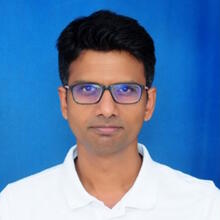
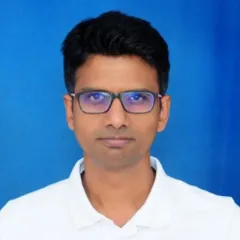
CAE Specialist with 20yrs overall & 17yrs in Bosch. Education, Masters in Engineering Design from Anna University (2002).Worked mainly on Non-linear Structural FEA, NVH, Dynamic Substructuring, Submodeling, Heat transfer using Abaqus, Durability calculations, Shape Optimization, Multibody Dynamics with Adams. Dealt with Electrical Drives/Motors/Electronics packaging, Automotive Steering, Gasoline Systems. Involved in Methodology development , Mentoring & Reviewing, Competency planning. He also worked at Hinode Technologies Pvt Ltd prior to Bosch.
Shape Optimization of Casting Components for Strength Improvement Using Tosca
Product area: Automotive steering
Problem: Manual iterations consume time and effort
Objective: To reduce stresses in strength calculations of die-casting components
The challenge faced: After many iterations, not possible to bring a few hotspots under limits
Manufacturing and design constraints also should be considered
Solution: With an appropriate combination of mesh & algorithm, it was possible to bring down hotspots
In the initial step, studies were carried out to explore results with settings for Methodology development
Outcome: CAD with the local design change
The learnings were applied to different cases
Shape optimization using Tosca gave dependable design directions in a much shorter time and effort


Dineshkumar has overall 14 years of experience in FEA and Currently, he is a Team Lead and working for automotive industry. In his current role, he interacts with globally to the project teams and works with them for various simulation activities and product development which can be addressed using SIMULIA products. He has Bachelors Degree in Mechanical Engineering from Anna University, Chennai. His focus areas are Durability, Vibration, and Thermo-mechanical on Heat exchangers and Battery thermal management components.
Quick design validation of FCM (Front cooling module) under vibration condition using Abaqus
A front cooling module (FCM) is a set of various parts that allow liquid coolant to flow through the engine block and cylinder head passages to absorb the heat of combustion. Engine cooling module (FCM) mainly consists of HTR (High Temperature Radiator), LTR (Low temperature radiator), Fan system, Condenser, ACAC (Air Charged Air Cooler). It is crucial to ensure each assembly works properly without failure to prevent structural failures. During the sweep vibration simulation, high stresses were observed in the HTR and LTR tanks at the middle mounting region. Since the ECM weight is higher, the mounting design is not sufficient to support the weight which results in multiple failure locations. The objective is to optimize the design of the middle mount of the HTR and LTR tanks for the sweep vibration simulation to avoid the coolant leakage.


Shailendra SINGH obtained his M.Tech degree in Microwave Electronics from the University of Delhi South Campus, New Delhi, India, in 2013, and his B.Tech degree from Galgotia’s College of Engineering and Technology, Gr. Noida, India. Currently, he serves as a Senior Engineer at Bharat Electronics Limited in Bangalore, while simultaneously pursuing his Ph.D. in Compact Microwave Passive Components at IIT Tirupati. His research interests include Antenna Design, development, and Testing, digital board testing, as well as real-time system integration and testing. He has also contributed to projects at the Institute for Plasma Research and CEERI-Pilani, India. Moreover, he has authored over 25 research papers in international and national journals as well as conference proceedings.
Design and optimization methodology of broadband circularly polarized crossed dipole antenna by using CST MWS for Navigation systems
This project involves the design of a compact cavity-backed circularly polarized crossed dipole antenna, operational within the frequency band of 1 to 2.5 GHz. This range covers various navigational bands such as GPS (L1, L2, L5), GLONASS, IRNSS L1, and S-Band. An optimization technique leveraging data from CST is developed to enhance the impedance bandwidth and axial ratio of the antenna. Additionally, a technique for improving beam width is also presented in this work.
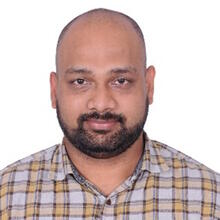
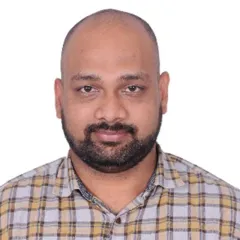
Praveen BALAJI is the Lead Engineer of EAVD - CAE AD Durability team at Mahindra Research Valley, with 6 years of current experience and an M.Sc. in Automotive Engineering from Cranfield University, UK.
Thermo-Mechanical Analysis of Brake Discs Using Eulerian Approach in Abaqus to Simulate Dynamometer Testing
The Electric Vehicle market is picking up its pace with many OEMs lining up with a lot of different vehicle variants. One of the major selling points when buying an EV is the range offered in a single charge. Though the range of vehicle is hugely dependent on battery, reducing the vehicle drag is also a significant contributor. Apart from vehicle outer surface, drag can happen between brake discs and pads when there is large coning of brake discs.
Coning is a condition in which the disc at its outer radius is axially displaced relative to the inner radius of the disc. This happens due to difference in temperature between the outer and inner radius of the discs, accumulated over several cycles of repeated braking and acceleration with very less time to cool the brake discs. Coning value of brake discs are determined experimentally in dynamometer by performing a series of braking and acceleration cycles.
This paper deals with the methodology developed for simulating this coning effect using ABAQUS solver. The conventional Lagrangian approach is not ideal as model building is complex. Also, the computational costs and run time are substantially huge. Therefore, the Eulerian approach is used wherein it is much easier to define the loads and boundary conditions. The disc rotation is taken care by defining a mass flow rate with subroutine UMASFL, which accounts for the velocities during the braking and acceleration of the discs, thus replicating the dynamometer test condition. Also, the run times are comparatively low, which helps in performing multiple iterations of brake discs at a much faster rate.
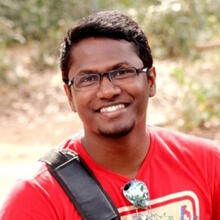

I have been with Valeo India Pvt Ltd since June 2019, currently working as Senior Lead Engineer, incharge of Structural and Vibration Simulations of Climate Control components of an automotive & involving in standards development. Prior to Valeo, I worked with Renault Nissan Alliance and Ford India in Passenger Car product development for Validation of BIW Strength and Durability performances. I possess an overall 11 years of rich experience in vehicle product development.
Correlation Improvement Study Using Abaqus in Automotive HVAC
An HVAC (heating, ventilation, and air conditioning) system is one of the key components of a vehicle’s comfort-control center. When the air conditioning is not functioning properly, driving can be miserable and, in some cases, can cause a potential safety hazard too. All modern cars are equipped with an air conditioning system. These components help maintain safe and comfortable driving conditions, including visibility. In FEA, a lot of complexity is involved in order to model the physical part as per the real conditions that will replicate the actual physics involved. One of such parameters is the interaction between components. In general, the different parts of the HVAC will be connected using screws, clips and tongue & groove joints. Capturing the actual behavior of the tongue and groove connections in Dynamic FEA simulations poses a challenge. Due to the modeling limitations, accuracy of the simulation is compromised in most of the FEA simulation cases. Since Abaqus solver is well known for its capability to solve complex problems with a very good confidence level and to model complex physical phenomenon close to reality, abaqus solver is considered for the correlation study. This abstract paper presentation is to describe the outline of the correlation study in HVAC dynamic simulations achieved by improved connection modeling techniques using ABAQUS.
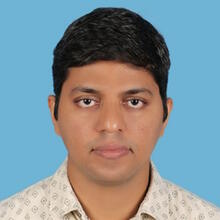

Dr. Vineesh K P completed his M. Tech in Mechanical System Design and PhD from IIT Kharagpur. Currently he is working as an Assistant Professor in the Department of Mechanical Engineering at National Institute of Technology Calicut. His research areas are computational solid mechanics, thermo-mechanical simulation and machine design.
Finite Element Modeling of Heat Treatment and Braking Process in Railway Wheels
The paper investigates the root cause of wheel gauge widening failures in railway wheels. The wheel gauge is defined as the distance between the inner flanges of railway wheels on the same axle. The specification limit of wheel gauge is 1600+2/-1 mm during the operation. The railway wheel is manufactured by casting or forging process. Once the wheels are manufactured, the wheels undergo heat treatment operation to generate beneficial compressive residual stresses on the tread surface. Here finite element model is developed to model the temperature evolution and wheel gauge evolution during the heat treatment process, fitment of wheel onto axle, and the braking process on railway wheel. Heating of the wheels to 9000C after manufacturing, quenching process on wheel tread surface, air cooling, tempering at 5000C is modelled in wheel heat treatment process. An axisymmetric model of the wheel is taken for the analysis. The model is developed by considering the temperature dependent thermo-physical material properties, heat transfer by conduction, heat loss to air and water through convection, and radiation heat loss is considered. Maximum compressive residual stress of around 300 MPa is observed on tread surface after the heat treatment process with compressive layer thickness of 40 mm. Once the heat treatment process is over, fitment of wheel onto axle is modelled. Fitment of axle onto wheel by using lubrication with a coefficient of friction 0.1 is assumed and press fit is done with an interference fit of 0.22 mm. Once the fitment of wheel onto axle is modelled, the braking on railway wheel is done. Braking of wheels with composite brake blocks is done. Heat generated during braking process is estimated by using a train running model. Heat partition between brake blocks and wheels are considered for the analysis. Even though the braking is asymmetric, temperature asymmetry remains only about 4 mm from the tread surface. Heat loss to environment due to convection and radiation is considered in the analysis. Convection heat loss to the air is modelled by using a convective heat transfer coefficient of 12 W/m2k. Cooling effect due to rail chill effect is also taken for the analysis. Simulation has done for series of braking cycles where one braking cycle consists of train running with 80 kmph and braking to stop the train. Such 10 braking cycles are considered for the analysis. With each braking event in a braking cycle, peak temperature seems to be increasing and temperature is stabilised within 6-7 cycles. During the braking process, the wheel gauge is found to be decreasing and when the wheels are cooled down after braking, permanent wheel gauge increase is observed. For a synchronous braking process, where all the wheels of a train absorb the uniform amount of heat, wheel gauge change during braking is found to be within the limit of specification. But due to the non-uniformity of braking which is normal in train where some wheels absorb higher heat input due to various faults in braking system, wheel gauge change can go beyond the specification limit. A permanent wheel gauge change of 3 mm is observed whenever there is a non-uniform braking with a heat input factor of 4 is applied.
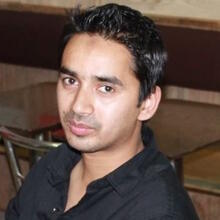

S Nadeem MASOOD has been working with a team developing the new aerospace composite structural designs at the Advanced Composite Division (ACD) of CSIR-NAL since October 2011. He has a Bachelor’s degree in Civil Engineering and a Master’s in Engineering of Structures (Aerospace). His Contributions in the area of ‘Numerical simulations & validation of failure in composite aerospace structures’ are highly recognized by the research community. He has also received research funding from various government and private organizations.
Composites Airframe Panel Design for Post-buckling: Inter-Laminar & Intra-Laminar Damage Initiation and Progression Simulation in Abaqus
Aircraft wing and fuselage panels are typically made using stiffened skin construction as they offer a lightweight solution to numerous design issues. Metallic aircraft structures have been designed to carry loads beyond the initial buckling of the skin under post-buckling to some extent. To reduce structural weight, like metal airframes, the designers are optimising the composite structures and getting closer to a zero-margin design. Stiffened panels have been frequently used in composite aircraft structures subjected to compression and shear loading. The efficiency of composite aircraft panels is not thoroughly utilised in design due to the complex nonlinear post-buckling behaviour and subpar inter-laminar properties of composite structures when subjected to out-of-plane deformations. This complexity has prevented designers from loading such structures to their full capability. The design of such structures to operate beyond initial skin buckling depends on the ability to accurately simulate their behaviour and collapse in the nonlinear post-buckling regime [1]. Moreover, due to the complex stress state and the variety of failure modes in composites, the onset of damage and the final collapse of stiffened panels in the post-buckled regime become involved. As a result, the post-buckling strength of the composite stiffened panel is not being utilised due to a lack of confidence in numerical models and experimental investigations [2]. A thorough understanding of the composite structural behaviour in the post-buckled regime should reduce the conservative nature of current design practices. The efficient design of structural components has to permit buckling below the ultimate load while ensuring no structural degradation in the post-buckled regime up to the ultimate load. Developing analytical methodologies and a subsequent finite element model is challenging due to the variety of failure modes associated with composites and the complex structural behaviour in the post-buckling regime.
The presentation will summarise the work from a series of publications [3-5] published under the AR & DB Centre of Excellence in Composites Structures (ACECOST) project at CSIR-NAL. A reliable numerical model to simulate the complex nonlinear behaviour of composite panels with onset and propagation of inter-laminar and intra-laminar damages is developed using ABAQUS software [6] and validated it from test results. Under post-buckling, panels can fail or collapse in one of several possible failure modes due to severe bending of the skin and stringers. Because these are laminated structures, severe interfacial stresses are generated between the skin and stringer, which may result in skin-stringer disbond or skin delamination. Cohesive elements are used to capture the possibility of inter-laminar damages such as disbond. Hashin's failure criteria [7] is used to capture Intra-laminar damage such as delamination due to fiber/matrix failure under compression or tension load. By combining intra-laminar and inter-laminar failure criteria in a single model, a comprehensive methodology for collapse simulation was developed. A sample end shortening curve obtained in the tests and its comparison with a numerical simulation which captures the onset and propagation of intra-laminar & inter-laminar damage and collapse of the panel, is shown in Figure 1. Figure 2 shows out-of-plane displacement contours measured by the DIC system during panel collapse tests, along with results from the ABAQUS simulation. There is good agreement between the two. The post-buckled shapes and the magnitude of out-of-plane displacements are captured well.
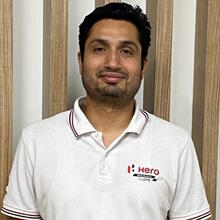

With a total of 15 years of experience, Ashish DHIMAN has 11 years of FEA experience in two-wheeler and construction equipment industries, with core expertise in strength, durability, and specifically, weld fatigue analysis.
Fatigue Life Evaluation of Welded Joints of Two Wheeler Frame Structure Using Verity Method
The study evaluates the method to predict the durability of welded joints in two wheeler frames at early development stage. In any metal structure, welded joints are more prone to failure than base metal locations. The fatigue life of a welded joint is usually much more difficult to predict than that of base material. This difficulty lies in variability associated with the different material, fit-up gap, notch factor, residual stresses, heat affected zones near weld and weld penetration.
Battelle research center has developed a method named ‘Verity’ to predict the fatigue life of welded structure and this method is applicable to wide variety of structures across industries. Verity method uses nodal forces and moments calculated along the weld line to calculate structural stresses at weld toe. The calculated structural stresses are less sensitive to mesh density than standard FEA stresses. A single master S-N curve is used for all kinds of welds be it a seam weld, spot weld or any other, for all thicknesses of sheet and for all types of loading. The method has been adopted by both ASME Sec. VIII Div.2 [11] and API 579-1/ASME FFS-1 [12]
In this study, following weld joints have been evaluated: 1. Tube to tube, 2. Tube to plate, 3. Plate to plate, 4. Tube to solid. The effect of full penetration weld, extended weld and partial weld on the life of the welded joint has also been studied. Also, correlation with the physical testing results has been established. Based on verity method results, countermeasures in the initial design phase have been proposed.


Graduate in mechanical engineering. Research fellow working in advanced FEA methods at ADE, DRDO.
High Fidelity Landing Load Analysis of Nosecone of UAV
Finite element analysis (FEA) has become a widely used tool for predicting the behavior of structures under various loading conditions. However, there are two main types of FEA, linear and nonlinear analysis, which differ in their assumptions and computational methods. In this study, the performance of linear and nonlinear FEA on the nosecone module of an unmanned aerial vehicle (UAV) was compared by analyzing their correlation with physical testing results.
The nosecone module of the UAV, comprising both metallic and composite structural components, was modeled using CATIA v6 software, and the structural analysis was carried out using Abaqus software. The module was subjected to ultimate landing load of UAV, and the resulting deformation and strains were calculated using both linear and nonlinear FEA. Contacts between the metallic and composite components were simulated in the nonlinear FEA analysis. The results of physical testing were compared with the FEA results.
The results showed that the nonlinear FEA had a much better correlation with the physical testing results than the linear FEA. The nonlinear FEA was able to capture the nonlinear material behavior of the module, which was not accounted for in the linear FEA. The simulation of contacts between the structural members in the nonlinear FEA analysis also improved the correlation with physical testing. This led to a more accurate prediction of the deformation and strains of the module. The physical testing results were in good agreement with the nonlinear FEA results, which suggests that nonlinear FEA can be a reliable tool for predicting the behavior of complex structures like the nosecone module of UAVs.
In conclusion, this study demonstrates the importance of selecting the appropriate FEA type for accurate and reliable simulation of UAVs. Nonlinear FEA, with the simulation of contacts between structural members, can provide more accurate results than linear FEA, especially for structures with nonlinear material behavior. Therefore, it is recommended to use nonlinear FEA for the analysis of the nosecone module of UAVs, particularly when interactions between multiple components of assembly has huge impact on behavior of assembly.
Keywords: Finite Element Analysis, Linear Analysis, Nonlinear Analysis, Nosecone Module, UAV, Deformation, Strains, Contacts, Metallic, Non‐metallic, CATIA V6, Abaqus.
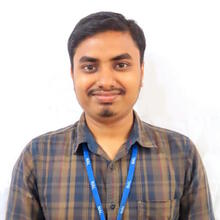
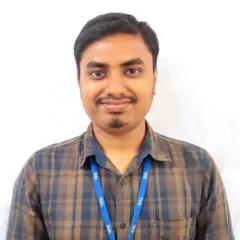
My name is Sujit Behera. I'm working as Project Associate at CSIR NAL, Bangalore.
Design and Simulation of a Compact UWB Microstrip Antenna
In recent years, ultra-wide bandwidth (UWB) antennas are in great demand in the field of military, radar, aerospace, automotive vehicles, broadcasting, and space applications because of its superior performance. Therefore, researchers are exploring microstrip antennas to attain UWB performance. Microstrip antennas has more advantages as compared to traditional antennas such as flexibility, light weight, small in size, easy to mount and fabricate on PCB substrate. In this paper, an UWB microstrip antenna has been proposed for broadband applications. The proposed microstrip circular patch antenna has been designed for ultra wideband frequencies covering C band (4-8GHz), X-band (8-12 GHz), Ku band (12-18 GHz). The antenna has been designed using a dielectric substrate of thickness 1.57mm with a dielectric constant of 2.2, and loss tangent of 0.0009. The designed antenna has a substrate dimension of 45x40 mm2. Microstrip line feeding technique is used in this design to feed the antenna. The antenna has designed and simulated using CST microwave studio suite. To achieve UWB performance, defected ground with small slot has been used. The simulated results shows a 2:1 voltage standing wave ratio (VSWR) in the frequency band of 2.5GHz to 18 GHz. The circular patch antenna has simulated gain ranges from 2.3 dBi to 8.05 dBi and the directivity ranges from 2.79 dBi to 8.45 dBi in the entire frequency band. In addition, the proposed antenna has a maximum radiation efficiency of 98 % and total efficiency of 95 %. The proposed antenna has been fabricated in CSIR-NAL using prototyping machine and the VSWR performance of the antenna is measured using a vector network analyser (VNA). The measured result shows a maximum return loss of 20dB at resonant frequency of 17.71GHz. The measured VSWR is less than 2:1 in the operating frequency. The proposed antenna can be used for 5G applications. In addition, the extensive application of the proposed antenna ranges from Wi-Fi, WLAN to satellite communication, and RADAR.
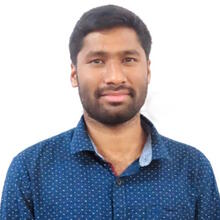

Hands on experience with Vector Network Analyzer, spectrum Analyser and signal generator. waveguide and coaxial calibration techniques, calkit installation and Electronic calibration. EM Characterization of electromagnetic materials with waveguide methods, Free space methods, Dielectric probe method, Coaxial air line method and millimetre wave Freespace methods. Characterization of solid and liquid materials from 400 MHz to 320GHz.
Design and Analysis of Honey Comb based A-Sandwich Radome
Modern radar systems operate in millimeter wave with higher bandwidth for communication as well as survailance. Further these radars are also used for weather monitoring and cloud analysis. As these radars are placed on mountains or near sea belt, it is required to protect them from the harse environment without affecting the EM performance. Radomes are these high EM transparent devices to protect such radars. Radomes are the protective covers used to protect the radar antenna from adverse environmental conditions such as high air pressure, rain, and wind. Since the radome acts like a protective cover to the radar antennas, it should have best mechanical properties with electromagnetic transparency at the operating frequency of the antenna. Considering the EM performance of the radome, the material used for radome should have minimum dielectric and magnetic losses, i.e a maximum transmission should be achieved at the operating frequency band. Recently three – dimension Honeycomb sandwich structures are considered as excellent candidates for lightweight and efficient microwave transmission materials to use as radome. Sandwich structures are widely used in commercial airlines, helicopters, and military aircraft. Conventional laminated radomes are used to receive incident signals within a narrow frequency band, whereas honeycomb and foam-based radomes provide a wide frequency range. Design and analysis of radome requires multidisciplinary knowledge such as structural and electromagnetics analysis. In this work, we designed a honeycomb-based A-sandwich radome structure with a honeycomb core layer and a quartz skin layer. The structure's core layer is chosen to have low permittivity, low dielectric loss, and low density. The dielectric constant (ε ) of quartz is 3.28 and dielectric loss tangent δ=0.001. The core layer was made of poly lactic acid (PLA) material with dielectric constant (ε) is 3 and dielectric loss tangent (δ) is 0.01 at room temperature.
The honeycomb core layer is designed and simulated using CST microwave software to achieve reflection and transmission parameters for the Ka band frequency range. The electromagnetic wave transmission performance of a honeycomb-based A-sandwich radome was simulated and optimized for the desired frequency pf operation. The dielectric properties of the honeycomb core layer are calculated using simulated reflection and transmission parameters. As shown in Fig. 1, a full structure has been designed as an A-sandwich radome with one core layer and two skin layers. These two skin layers serve as a face sheet, covering the honeycomb core layer on the top and bottom. The proposed honeycomb A-sandwich structure is 120*120 mm^2 in size. The power transmission of the simulated structure is above 90% in the Ka band.
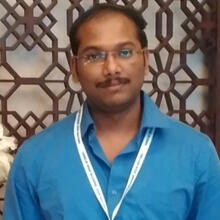
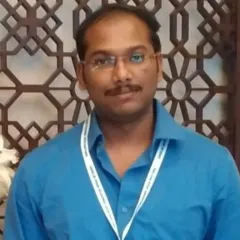
An accomplished Dy.Team leader having experience of over 10 years in R&D and total 12+years in automotive domain. Proficient in Vibration(Random,Harmonic & Shock) & Durability analysis of various automotive subsystems with Fuse boxes-Electrical center, Power distribution unit, Wireless charger, Plug-in hybrid and electric vehicle charge inlet/Plug connectors , Safety Restraint Systems, Engine Fuel System, Engine Ignition System for Automotive OEM’s using ABAQUS & ANSYS WB.
Random Vibration Analysis for an Automotive Fusebox Using Abaqus
This paper presents a random vibration analysis for an automotive fuse box. The fuse box protects multiple electrical components inside the vehicle. To verify the durability of the body mounted Fusebox due to rough road condition a Finite Element Analysis is performed using Standard PSD vibration profile. Abaqus FEA model is used to determine the natural frequencies, mode shapes, transmissibility and random response of the assembly. Using the baseline model, the RMS Mises stresses and RMS displacements are recorded at the critical regions. The obtained results are used to optimize the Fusebox design iterations by comparing the limits of maximum RMS Mises stresses and RMS displacement. S-N curve of the component material is used to calculate the fatigue life damage using Wirsching method. FEA and experimental results was validated for the final design.
Keywords: Fusebox, Random vibration analysis, FE model correlation, Fatigue life
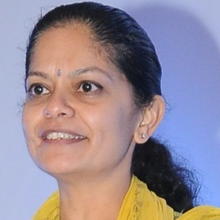
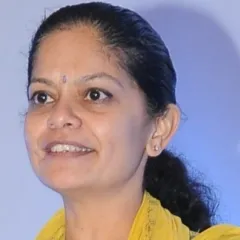
Renuka SRINIVASAN is currently SIMULIA Sales Director for India. In her current role, she is responsible for the SIMULIA business in India. Prior to this, she was WW Services Director for SIMULIA. Renuka has over twenty years of experience in the simulation business and was instrumental in setting up the SIMULIA business in India.
She was worked with customers across a variety of industries including automotive, aerospace and defense, industrial equipment manufacturers, civil engineering, engineering services providers, among others. She was a Bachelors in Civil Engineering from BITS, Pilani, and a Masters from Duke University.
SIMULIA Technology Update and Highlights
SIMULIA is a Simulation brand within Dassault Systèmes, the 3DEXPERIENCE company. We provide technology for simulation in each domain – covering Structures, Fluids, Electromagnetics, Multibody, Vibro-acoustics, and Automation & Optimization. This presentation offers a brief overview of these technologies and illustrates that you are using the same technology (per domain) whether you are a standalone product user or are a 3DEXPERIENCE platform user. We then highlight multidisciplinary and multiscale solutions of select industry processes and workflows. We also introduce a new unified licensing model that provides access to all solvers from the same license pool. The new model includes a cost-effective approach to encourage simulation-based design exploration. The presentation concludes with a peek into the remainder of the RUM agenda, including deep-dive sessions in each domain.
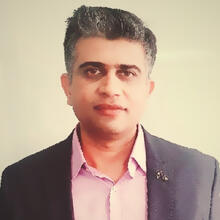
Shripad TOKEKAR has been working with Dassault Systemes for close to 13 years. Over the decade-plus career in Dassault, Shripad has been working with various customers across industries to deploy industry best processes for simulation. He started a career as an applications engineer providing technical support, training, and services and further closely worked with Automotive Industry to develop best practices, workflows & methodologies.
In his current role as an Industry Process consultant manager, he is leading a team of experts from various domains such as Structures, fluids, EMAG, MBS & Optimization. Shripad has a keen interest in understanding the Industry processes and deploys the best practices.
He has a Master’s Degree (MTech) from IIT Delhi in Applied Mechanics with a specialization in structural mechanics.
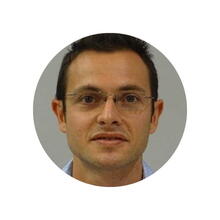
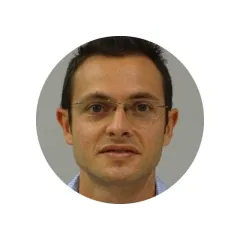
Raffaele SCUDERI received his master degree (summa cum laude) in Telecommunication Engineering from the University of Pisa, Italy, in 2010. After he graduated, he joined the Microwave and Radiation Laboratory of the University of Pisa as Ph.D. student. During this period, his research activity was focused on the numerical solution of Maxwell equations with special attention to the development of equivalent radiation models for EMC problems. In 2011, he has been visiting student at the department of Electrical Engineering of the Pennsylvania State University. In 2012 he joined IDS –Ingegneria Dei Sistemi as System Analyst and then as Application Engineer. His job was focused on simulation and measurements of the electromagnetic phenomena for complex platforms (radiation and scattering), in the radio frequency and infrared spectrum. In 2018 he joined Dassault Systèmes and his current role is Electromagnetics Industry Process Consultant. He works in the field of the electromagnetic simulation as SIMULIA EMAG specialist, contributing into the pre/post-sales activities, consulting services and R&D. Raffaele actively contributes to the scientific community publishing articles and holding lectures and seminars on electromagnetic simulation.
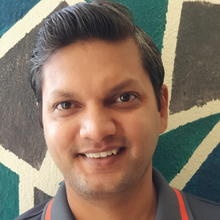

Prakash PAGADALA is an Industry Process Consultant with the Customer Process Experience team at Dassault Systemes India Pvt Ltd. His domains of expertise include Process Automation and Customization, Fatigue Simulation, Advanced Dynamic Analysis, Automotive Engine, and Powertrain Durability. He works with clients across various industries including Life Science, Transportation, and Mobility, Tire, and Industrial Equipment segments. Prior to joining DS, he was working with Altair Engineering India Pvt Ltd for six years. Prakash completed B.Tech. Mechanical Engineering from Kakatiya University and holds a Masters in Mechanical Design.
Brake System Engineering
The Brake system is a critical part of vehicle architecture. A good brake system design will ensure reliability, durability, efficiency, performance, and safety where and however the vehicle is operated. When the design is inadequate, the vehicle operator may be inconvenient to the occupants and in the worse case, no longer safe. The Brake System Engineering Industry Process from Dassault Systemes provides designers and engineers with realistic design & simulation solutions that, when used to drive the engineering process, ensures a perfectly designed brake system that meets the customer’s expectation for safety and a comfortable ride experience


Ranjit is Industry Process Consultant at SIMULIA India. Ranjit has been with SIMULIA India for 5 years and has a total of 10 years of work experience. In his previous experience, he owned the design and manufacture of critical subsea oil drilling equipment for major off-shore drilling providers with his designs still operational off the coasts of Norway & Sao Paulo. His areas of expertise are non-linear mechanics, design automation & computational programming. He holds a master's degree in computational mechanics from University at Buffalo, New York, and a bachelor's degree in mechanical engineering from NIT Calicut. He is passionate about helping users build the best products possible in the shortest time by enhancing the capabilities of the SIMULIA portfolio using the latest automation and artificial intelligence tools.
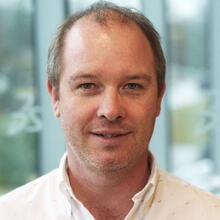

Chris is the Senior Director of the SIMULIA R&D Structural Simulation department at Dassault Systèmes, which includes the responsibility for R&D activities related to strategy, product management and product development for structural simulation applications and solver technology.
Chris has over 20 years of simulation-related experience in computational fluids and computational solid mechanics and has held a wide range of technical and leadership positions in Product Development, Strategy and Product Management since joining Dassault Systèmes in the late 90s (HKS, Inc. at the time). After several years as a development engineer focused on core solver development, Chris expanded his activities to include structural modeling and results processing and led the development of our portfolio of Abaqus-based solutions on the Dassault Systèmes 3DEXPERIENCE Platform. Since 2016, Chris has led the overall Structures Simulation SIMULIA R&D organization responsible for development of structural simulation solutions and technology.
He has Masters of Science and Doctoral degrees in Applied Mechanics and Mechanical Engineering.


More than 10 years of experience in Stress Analysis of Aircraft Structures following Airbus and Bombardier Processes and Methodologies. Recognized ""Technical Specialist"" in Airbus India Faculty under R&T perimeter.
Strong background in Stress analysis of Metallic Primary & Secondary Structures involving Static, F&DT and FE analysis.
Worked in many Aircraft Programmes namely Bombardier C-Series (now Airbus A220), A320NEO, A321NEO, A350-900 XWB, A380-800.


Shailendra SINGH currently pursuing PhD from IIT Tirupati. He received his M. Tech degree in Microwave Electronics from the University of Delhi South Campus, New Delhi, India, in the year 2013 and a B.Tech degree from Galgotia College of Engineering.
Design & Development of 64 Element Active Antenna Array
64 Element active phase array antenna model is simulated for different steering angles. Radiation pattern and passive and active RL variation is also observed for different scanning angles.


Dr. Abhay DESHPANDE is working as Scientist at SAMEER Mumbai for past twenty-six years. His area of research is design and development of Linear Electron Accelerator for Medical and Research applications. He did Masters in Physics with Nuclear Physics as specialization from Mumbai University. He was awarded Ph. D. in Physics for the research on Mode Separated RF Photocathode gun for multi bunch beams at High Energy Accelerator Organization well known as KEK in Japan. His work on high gradient injector is well received worldwide. He has played a key role in design and development 6 and 15 MeV Linac for radio therapy in India. The 6-MeV linac is now already installed in 3 hospitals in India and done over 300,000 treatments. At present he is leading the pursuit of the Next Generation Medical Linac activity to make affordable Cancer Therapy systems in the country. Current work of the group is Design and Development of High Energy Accelerator for Isotope generation, in particular 99Mo and thereby 99mTc. The work involves development of high gradient accelerators to ensure over 15 MeV beam in less than a meter long linac. Such a high current compact linac will be very useful for various industrial applications. He is actively pursuing Indo Japan Collaboration for Multi Ion Therapy R&D in India. This novel injector free fast cycling synchrotron will be able to generate Carbon Ions for medical applications. He coordinates Indo-Japan Accelerator School for past ten years. He also coordinates and is core member for International School for Beam D Dr. Abhay DESHPANDE is an amateur astronomer for past 33 years and teaches Positional Astronomy, Stellar Evolution for students in Mumbai. He is well known for astronomy and science popularization. He has conducted over 500 sky shows all over the country.
CST Simulations of High Energy Linac Design and Development
Our group at SAMEER (R&D Lab of Govt of India) is focussed on design and development of linear electron accelerator (linac) for cancer therapy and other applications. The initial simulations were done using a code called Superfish Poisson which is free code developed by Los Alamos National Laboratory. This is a 2D code. We acquired CST in 2015 and initiated design of cavities in 3D mode. The aim was to check performance of fabricated system as against the simulations. We have made many such cavities and have good data to check the validity. The main advantage of CST is that we are now able to make designs at much faster rate and it is possible to directly export the model and convert it into relevant files which are taken by 3D CAD software. Then the CAD output can be readily read by CNC machines thus making it possible to replicate exact model made using CST in the CNC machine and thus dimensionally the outcome is same as the model. In this talk, I will focus on modelling of accelerator components using various modules in CST Studio. I will also run through- do’s and don’ts while doing 3D simulations.


Darshan holds a Master’s degree in Aerospace Engineering from ISAE-SUPAERO, France and has industry experience of 6 years in the field of aerodynamics and acoustics. Working as Industry Process Consultant at Dassault Systèmes, Darshan works with automotive OEMs providing solutions related to aerodynamics & acoustics. Prior to the current role, he has worked as an aerodynamicist with several motorsports teams such as Toyota Motorsports GmbH, Germany, Oreca Motorsports, France, including Formula 1 team, Manor Racing in the UK. He has a special interest in working on flow separation control, drag reduction and shape optimization
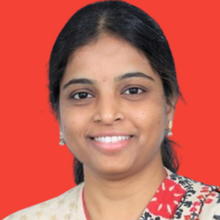

Geetha AVULA started her career with Dassault Systemes in 2004 and has been with the company since then. She started as an Applications Engineer and is now the Senior Technical Manager. As a support engineer, she has provided technical training and support for SIMULIA products primarily Abaqus. She has interacted with many customers giving them guidelines on the issues they are facing, suggestions on their workflows, etc.
In her current role, she’s responsible for driving initiatives such as Electric Vehicles, Additive Manufacturing, Cloud solutions, to be able to guide companies on the technology Dassault Systems has to offer. Interacting with many Electric Vehicles companies in India and working with the global team she is supporting quite a few clients in the EV space.
She holds a Masters's Degree in Computational Mechanics of Materials and Structures from the University of Stuttgart, Germany.
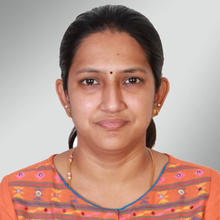
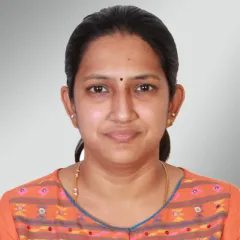
Jofeetha is a member of the Center for Simulation Excellence (CSE), working as a Technical Specialist for Dassault Systèmes, India. She has close to five years of experience in the simulation domain in the fields of solid and structural mechanics. She has a master’s degree in Structural Engineering from IIT, Kharagpur, and a Bachelor’s degree from PSG College of Technology. In her current role, she regularly interacts with customers providing them support on SIMULIA products. In addition to this, she is also involved in conducting trainings and executing benchmarks. Her focus areas are Geomechanics, Process Automation and Nonlinear Structural Analysis.
Structures Update
This presentation will focus on recent Abaqus enhancements related to contact, materials, analysis procedures, and high-performance computing (HPC). New capabilities for modeling and results visualization will also be discussed.
